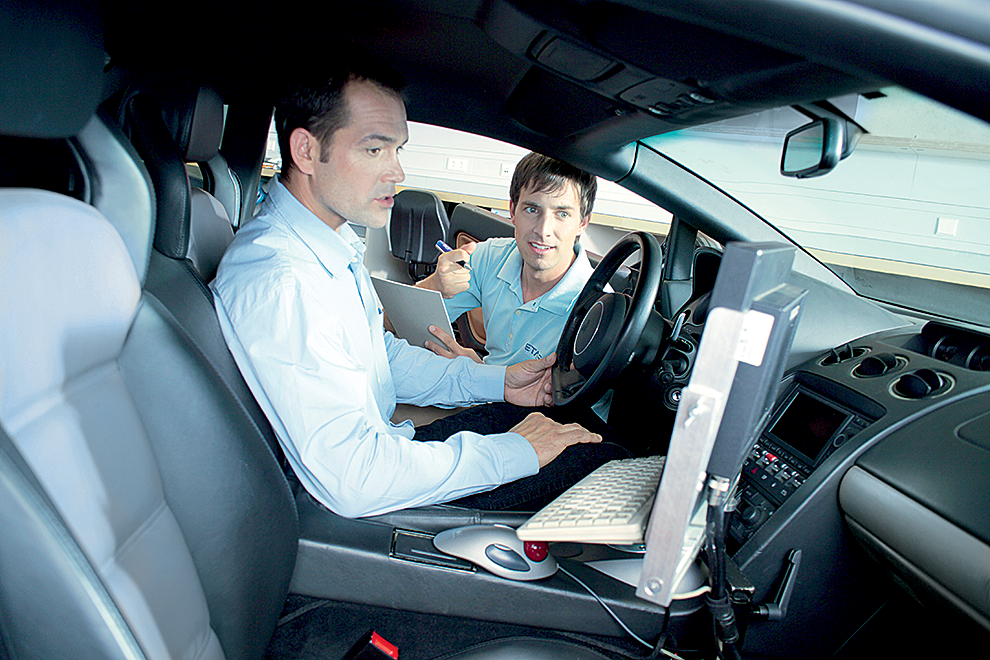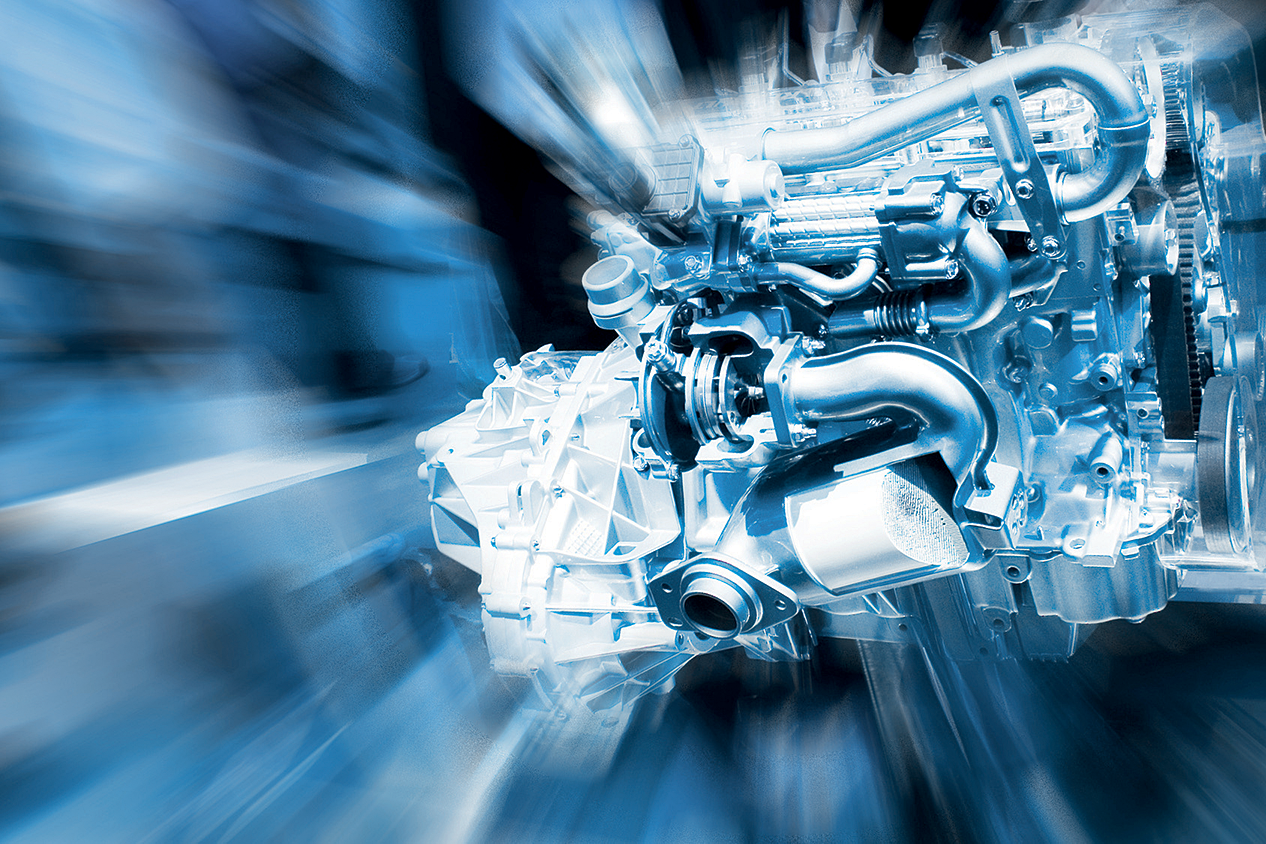
Automation
Empirical calibration and validation steps are replaced by predefined procedures which can be fully or partially automated. Automated procedures can be performed in much shorter time: Error prone tasks can be done more dependably and even complex and critical tasks become reproducible. Mathematical optimization algorithms and environment models support effective automation.
Automation of calibration and validation tasks may comprise single operations, e.g., ramping up parameter values, or full tests or calibration runs without any human interaction. In the vehicle, calibration procedures which are repeated many times, e.g., when adjusting gear shifts, are often automated.
Minimum cycle times
At test benches, automation systems control experiments and perform much of the calibration work. In steady state experiments, measurement and calibration tasks are not performed until the behavior of the unit under test, e.g., the engine, at a certain working point is stationary. Dynamic transient state experiments are more realistic and thus improve the quality of measurement and calibration data. In addition, they minimize automation cycle times. To perform dynamic experiments, rapid measurement and calibration methods are required. The same is true whenever control functions such as knock protection are conducted by the test bench instead of the ECU. In this case, a real time interface between the test bench and the ECU is requested.
ETAS' open and flexible MCD solutions support the automation of measurement and calibration tasks. INCA supports ASAM as well as real time Ethernet standard protocols, providing remote access for test bench automation systems. In addition, application programming interfaces are provided.

For integration with test bench automation systems, INCA supports the established ASAM interfaces, i.e., the ASAP3 protocol and the ASAM MCD-3 MC object model. The calibration cycle times that can be realized with these standard interfaces are well suited for steady state experiments.
Rapid measurement and calibration methods are supported by the INCA-MCE Measurement and Calibration Embedded add-on to INCA. By providing real time connection of the test bench automation tool to the ECU, INCA-MCE provides for outstanding measurement and calibration performance.
INCA-MCE runs on the ES910 module serving as real time ECU interface. Either the standard EtherCAT or the application specific iLinkRTTM Ethernet real time protocol is employed to connect ES910 with the test bench. Using these protocols, the automation tool and INCA-MCE use physical values to exchange measurement and calibration parameters addressed by name. To communicate with the ECU, INCA-MCE transforms all data into the appropriate binary values.